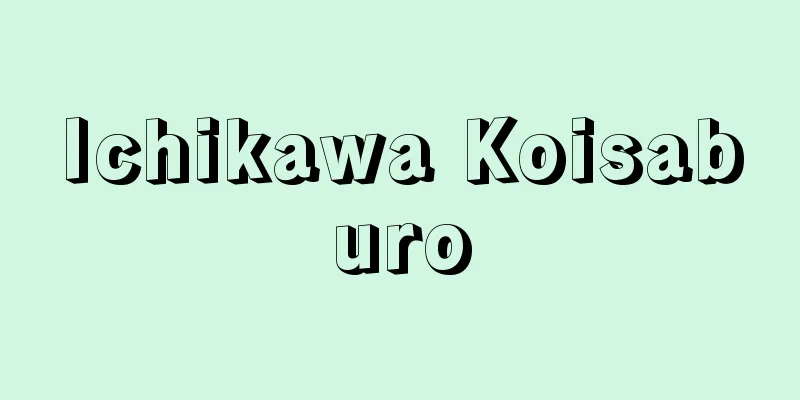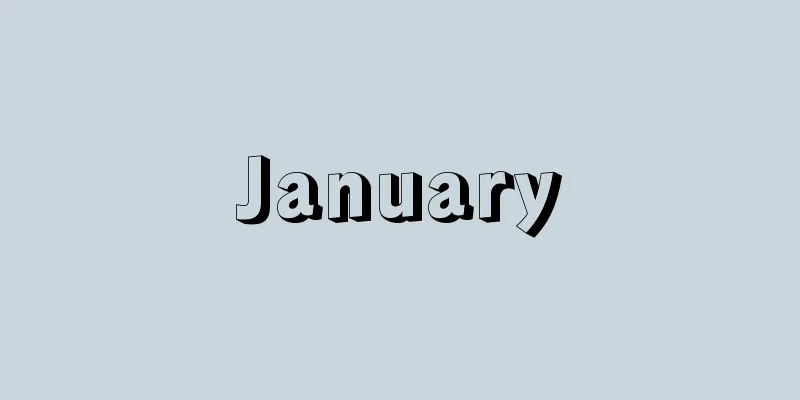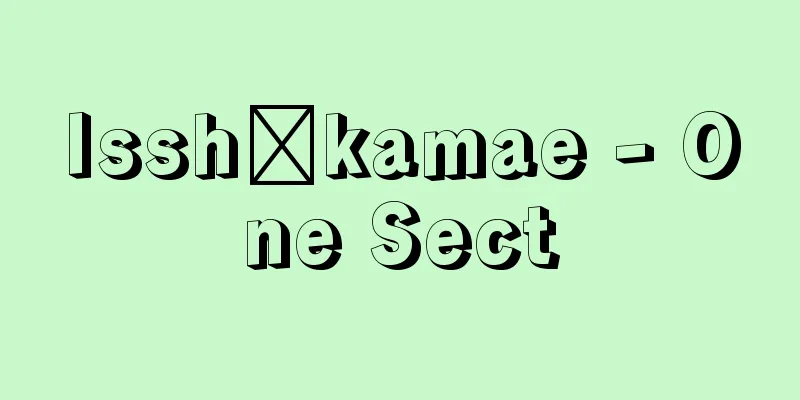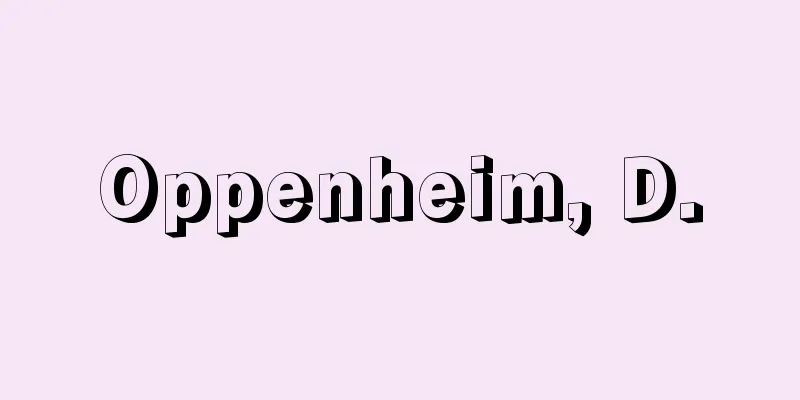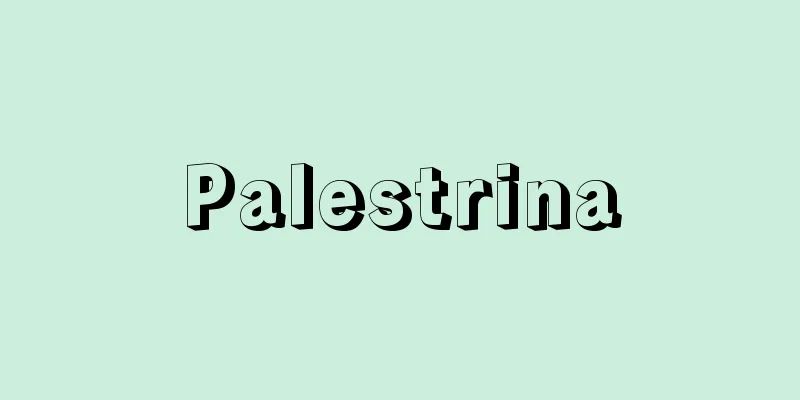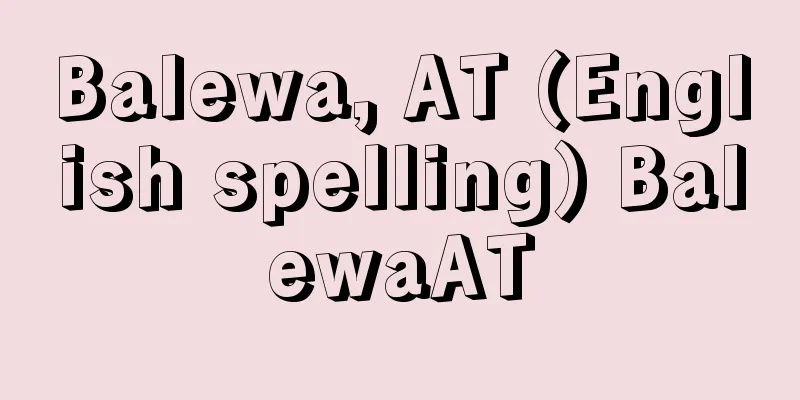Russian Federation (English spelling)

Overview
Before the 1917 revolution, the Russian Empire integrated vast colonies and dependent territories, including the Caucasus and Central Asia. Unlike Western countries, these territories were connected to the mother country by land, and many Russian peasants and workers, as well as administrative officials, immigrated there. After the revolution, the entire region was integrated into the Union of Soviet Socialist Republics (USSR, USSR), but the Russian Federative Republic was the largest constituent entity, with almost half the population. After the collapse of the Soviet Union, the official name of the Russian Federative Republic became the Russian Federation (or Russia). As the name suggests, it is a federal system consisting of republics, but when Putin was president, seven federal districts were established and central power was strengthened. During the imperial era (Islamic Russia), Russians were united by the Russian Orthodox Church, but during the Soviet era, Marxism-Leninism replaced it. Today, after abandoning socialism, Russian Orthodoxy has become the basis of the people once again. The Tatars, Russia's second largest ethnic group living in the central region, are mostly Muslim, but they coexist with Russians. [Kimura Hideaki] NatureLand and GeographyThe East European Plain stretches to the west, with the Ural Mountains forming the border with Asia. The East European Plain occupies most of European Russia, reaching the Caucasus Mountains in the south. In the north it extends to the Barents Sea, the Karelian Plateau, and the Kola Peninsula. The center of the plain is the source of the Volga River and other rivers, and has vast reserves of coal, oil, natural gas, iron ore, copper, manganese, and more. To the east of the Ural Mountains is the West Siberian Plain, a swampy lowland that runs along the Ob River to the Yenisei River, the Central Siberian Plateau that reaches the Lena River, and the South and East Siberian Mountains that reach the Pacific coast, forming the Far East. The world's deepest lake, Lake Baikal, is located here. For more details, please refer to the "Soviet Union" entry. Although nature conservation was carried out during the Soviet period, Lake Baikal and other places were polluted by waste gases and wastewater caused by industrialization, environmental destruction was progressing as a result of nuclear development, and widespread melting of permafrost was occurring due to global warming. climateExcept for the southwestern tip near the Black Sea and the southeastern tip near Vladivostok, the climate is largely unchanged, dominated by a continental climate characterized by large temperature differences between summer and winter, short springs and autumns, little rainfall, and strong winds. Most of the country is in the temperate zone, but the average January temperature is below 0°C, dropping to below -50°C near Verkhoyansk in the Republic of Sakha (Yakutia) in the northeast. The average summer temperature is 8°C along the Arctic Ocean coast and 20°C in the Caucasus valleys. The annual average temperature in the capital, Moscow, is 5.3°C, with a minimum of -7.5°C in January and a maximum of 18.4°C in July, and an average annual precipitation of 705.3 mm. Flora and FaunaThe northern coastal region is dominated by tundra, and to the south is a vast coniferous forest known as taiga, bordered by larch woodlands to the east and birch and fir woodlands to the west. The central East European Plain and southeastern Russia are covered with natural mixed forests, the Eastern European and southern West Siberian Plains are covered with steppes and cereal-growing black soils, and the southern part of the plain passes through semi-deserts towards the Caspian Sea, the Caucasus, and the Altai Mountains. The northern coast is home to Arctic species such as seagulls, loons, polar bears, bearded seals and walruses, the tundra is home to Arctic foxes, owls, Arctic hares, lemmings and reindeer, the northern taiga is home to moose, reindeer, wolves, brown bears, lynx, sables, squirrels, foxes and wolverines, the southern forests are home to wild boars, minks and deer, Primorsky Krai is home to Ussuri tigers, the steppes are home to ground squirrels, jerboas, hamsters, polecats, Cossack foxes, hawks, eagles and cranes. Administrative division
Names of federal territories (republics, states, etc.) and constituent entities
historyCollapse of the Soviet UnionThe Russian Federative Republic was established in 1918, the year after the Russian Revolution, and in 1922 it formed the Soviet Union (USSR) together with Ukraine, Transcaucasia, and Belarus. Gorbachev, who was elected General Secretary of the Communist Party of the Soviet Union in the late 1980s, abolished the one-party system of the Communist Party in February 1990 as he promoted perestroika (reforms), and was elected President of the newly established Soviet Union at the Congress of People's Deputies of the Soviet Union in March. In Russia, Yeltsin was elected Chairman of the Supreme Soviet at the Congress of People's Deputies of Russia in May, and in June the Supreme Soviet declared sovereignty. Yeltsin left the Communist Party of the Soviet Union at the 28th and final Congress in July. From the end of 1990 to the beginning of 1991, movements for secession intensified in the three Baltic states, leading to armed intervention by the Soviet military. A referendum on maintaining the union was held in March 1991, and although the Baltic states boycotted it, 76.4% of voters voted in favor. However, Yeltsin won a landslide victory in Russia's first presidential election in June, and in August he foiled a coup attempt by conservative Communist Party faction by calling a general strike, and in December he dissolved the Soviet Union with the creation of the Commonwealth of Independent States (CIS). The Yeltsin EraIn January 1992, Yeltsin fully liberalized commodity prices and began the transition to a market economy, but the inflation caused by this did not subside even into 1993, and the Verkhovna Rada, backed by public discontent, intensified its anti-Yeltsin offensive. Prime Minister Chernomyrdin, who took office in December 1992, tried to revise the policy, but in September 1993 Yeltsin forced the dissolution of the Verkhovna Rada and shelled the Verkhovna Rada supporters who had barricaded themselves in the Beridom (the White House, the parliament building) and forced them to submit. In December Yeltsin put to a national referendum a new Russian constitutional draft that strengthened the powers of the president, and at the same time held elections for the lower house based on this constitution, but votes in favor of Yeltsin were sluggish, and the Liberal Democratic Party led by Russian nationalist Vladimir Volfovich Zhirinovskii (1946-), the Communist Party of Russia led by Zyuganov, and the Agrarian Party gained ground. In the 1996 presidential election, Yeltsin won the runoff election in July, defeating Zyuganov, who had received 40% of the votes in the first round, but his health problems, including heart disease, meant that political instability did not disappear. After dismissing Chernomyrdin in March 1998, by August 1999, Yeltsin had appointed and dismissed a succession of prime ministers, including Sergei Vladilenovich Kirienko (1962-), Yevgenii Maksimovich Primakov (1929-2015), and Sergei Vladimirovich Stepashin (1952-). Putin, who was appointed Prime Minister in August 1999, portrayed a "strong Russia" through measures such as military intervention in the Chechen Republic, and won popular support in the lower house elections held on December 9 of that year, greatly increasing the influence of the ruling Unity party, which had only just been formed in October. Although the Communist Party maintained its position as the largest party, it did not have the same momentum as it had in the previous election (1995), and the anti-Yeltsin "Fatherland-All-Russia" party, formed by Moscow Mayor Yurii Mikhailovich Luzhkov (1936- ), and former Prime Minister Primakov, also suffered a crushing defeat, with the Unity group, which combined related factions, becoming the largest party in the lower house. Yeltsin suddenly resigned in December 1999 and appointed the young Putin, born in 1952, as acting president. Putin won the presidential election in a landslide victory in March 2000. Yeltsin died in April 2007. [Kimura Hideaki] Putin and Medvedev eraShortly after assuming the presidency, Putin divided the country into seven federal districts and appointed presidential plenipotentiaries in May 2000. In July of the same year, he established a system for dismissing regional leaders, including regional governors, and a prohibition on regional leaders holding multiple positions, significantly strengthening presidential powers. In the lower house elections in December 2003, the ruling Unity party won a landslide victory. Putin, who worked for the KGB (Committee for State Security) from 1975 to 1990 during the Soviet era and was appointed head of the FSB (Federal Security Service), its successor, during the Yeltsin era, controlled the mass media critical of the government and arrested some oligarchs. One of them, Mikhail Borisovich Khodorkovsky (1963- ), president of an oil company, was sentenced to eight years in prison in September 2005. In the second presidential election in March 2004, Putin was re-elected with 71.31% of the vote, while the runner-up, Communist Party candidate Nikolai Mikhailovich Kharitonov (1948- ), received only 13.69% of the vote. In the lower house election in December 2007, the ruling party United Russia (formed in 2001 by the merger of the ruling party Unity and the centrist coalition Fatherland-All Russia) won a landslide victory, gaining 315 seats, more than two-thirds of the total. His approval rating subsequently increased amid a rise in international oil prices, but because a president cannot be elected for three consecutive terms, Putin appointed Medvedev as his de facto successor in the 2008 presidential election, and the 42-year-old Medvedev was elected to the presidency, while Putin became prime minister. Medvedev pushed ahead with judicial and military reforms, and Putin also demonstrated initiative as prime minister. Following the 2012 presidential election, Putin became president and Medvedev became prime minister in May (for a general history of Russia from its founding through the imperial era and Soviet era, see "History of Russia"). Politics, Diplomacy, and DefensePolitical Peculiarities of the Russian FederationThe Russian Federation is a vast region covering three-quarters of northern Eurasia, and is a multi-ethnic country located in a harsh natural environment, with a large area of permafrost. In order to maintain unity under these conditions, politics has been centralized since the imperial era. During the Soviet era, the one-party system of the Communist Party based on Marxism-Leninism continued for 73 years, but after its collapse, the country was transformed under President Yeltsin into a liberal-based system and the secret police, the KGB, was disbanded. Amid political turmoil, a new constitution was enacted in 1993 that strengthened the power of the president, and political leadership was transferred to oligarchs with strong ties to Yeltsin. The gap between rich and poor widened among the population, and the number of poor people increased, leading to a growing nostalgia for the Soviet era, especially among the elderly. When Yeltsin stepped down in 1999 and Putin became president, the president's control over the economy and the regions was significantly strengthened. Political systemThe constitution adopted in a national referendum in December 1993 established a multi-party system with three separate powers. As of 2015, the republic is made up of 83 entities: municipalities, republics, regions, provinces, autonomous regions, and autonomous districts. The President is directly elected, is the head of state and commander in chief of the armed forces, and decides the country's basic domestic and international policies. He can issue presidential decrees and repeal government decisions that contradict the Constitution or presidential decrees. He can appoint the Prime Minister with the consent of the Lower House, decide on the resignation of the entire Cabinet, and dissolve the Lower House. He serves a six-year term, with a limit of two consecutive terms, and must be 35 or older to be eligible to run for office. The parliament is bicameral, consisting of the Senate (Federal Council) and the Lower House (State Duma). The term of office of the Senate varies depending on the head of the federal subject and each parliament, but is generally four to five years, while that of the Lower House is five years. The Senate seats are composed of one representative elected from each of the legislative (parliament) and executive (executive) bodies of the 83 subject subjects of the Russian Federation. The Lower House has 450 seats, all of which are elected by proportional representation. Laws adopted by the Lower House but rejected by the Senate can be adopted in a second vote if more than two-thirds of the Lower House votes in favor. DiplomacyUnder the Gorbachev administration, which promoted perestroika, negotiations on disarmament with the United States progressed and the Cold War was beginning to end, but with the collapse of the Soviet Union and the abandonment of the socialist system, ideological conflict with Western countries disappeared. Eastern European countries dissolved COMECON (Council for Mutual Economic Assistance, called SEV in Russian) and moved closer to the West, and the former Soviet Union countries also became targets of diplomacy. Yeltsin adopted a cooperative stance with Europe and the United States, and at a summit meeting with U.S. President Clinton in Helsinki, Finland in March 1997, he approved the expansion of NATO (North Atlantic Treaty Organization) on the condition that relations be strengthened, and became a member of the summit in June (it has been suspended since March 2014). Putin's response to the September 11 attacks in the United States was pragmatic, pursuing a cooperative approach with the United States, signing the Strategic Offensive Reduction Treaty (Moscow Treaty) in May 2002, and tacitly approving the NATO membership of the three Baltic states in November. He also withdrew from the Cam Ranh Bay base in Vietnam and the Lourdes reconnaissance base in Cuba. However, relations with the United States have cooled since the Iraq War in 2003, and friction has arisen over the integration of the Commonwealth of Independent States (CIS) countries into the European Union (EU) and Iran policy, putting pressure on pro-Western countries in the CIS, such as Ukraine and Georgia. In December 2007, he suspended the implementation of the Conventional Forces in Europe (CFE) Treaty in response to the deployment of the US missile defense system in Eastern Europe. During this time, he held a summit in St. Petersburg in July 2006. He also actively conducts diplomacy with foreign leaders through mutual visits and telephone talks. With China, in July 2001, the Sino-Russian Treaty of Good-Neighborliness, Friendship and Cooperation was signed, replacing the Sino-Soviet Treaty of Friendship, Alliance and Mutual Assistance, which had expired in 1980, and in June 2005 a final agreement was reached on the demarcation of the eastern border, which had not yet been finalized (Sino-Russian Supplementary Agreement on the Eastern Border). Medvedev visited China in 2008, where the two countries agreed to strengthen their strategic partnership and issued a joint statement to check the United States. In the same year, they visited India, where they agreed to build a nuclear power plant. With the inauguration of President Obama in 2009, new developments are expected regarding nuclear disarmament and the deployment of missile defense systems. [Kimura Hideaki] defenseSince the end of the Cold War and due to financial difficulties, the country's defense budget has been significantly reduced compared to the Soviet era, but it remains a major military power. When the Soviet Union collapsed, its nuclear equipment was distributed among the CIS countries. The nuclear launchers and mobile launchers of Ukraine, Belarus, and Kazakhstan, which had declared themselves non-nuclear, were transferred to Russia, and some were destroyed. The 2002 Strategic Offensive Reduction Treaty with the United States reduced the number of deployed strategic nuclear warheads to between 1,770 and 2,200. The Russian military has a total of 956,000 troops, including 305,000 ground troops (army), 154,000 naval troops, 167,000 air force troops, and other troops such as the Ministry of Interior and Border Guard troops, and is currently transitioning from conscription to a volunteer system (contract soldiers). In June 2001, China and four Central Asian countries (Uzbekistan, Kazakhstan, Kyrgyzstan, and Tajikistan) founded the Shanghai Cooperation Organization (SCO). The first six-nation joint military exercise was held in August 2007, and at the same time, a summit was held in Bishkek, the capital of Kyrgyzstan, where the Bishkek Declaration was adopted, incorporating ideas about security and cooperation in the energy sector, demonstrating their unity. Economy and IndustryEconomic Overview after the Establishment of the Russian FederationIn January 1992, under the Yeltsin administration, Deputy Prime Minister Yegor Gaidar (1956-2009) implemented a market economy and a shift from socialism to capitalism through "shock therapy" centered on full price liberalization, drastic reductions in subsidies, and the privatization of state-owned enterprises. In July of the same year, the focus of reform shifted to privatization of companies, and in October, securitized privatization checks (vouchers) were issued to all citizens, and in December, the conversion of large state-owned enterprises into joint-stock companies began. Consumer prices rose 26-fold that year, industrial production and investment fell sharply, the gap between rich and poor widened, and pensions became unsustainable. In the late 1980s, the official ruble exchange rate was 1 ruble = 1.1 to 1.8 dollars, but by the end of 1992, it had plummeted to 450 rubles = 1 dollar. Wealth began to flow overseas, and control of economic policy shifted to Prime Minister Chernomyrdin. In 1993, Yeltsin revised the policy slightly and forced the dissolution of parliament in late September, but the presidential supporters were defeated in the December parliamentary elections. Production at the joint-stock companies that were under the control of the former company presidents continued to decline, competition between the former state-owned companies that had been privatized without being divided could not be realized, and the military industry remained state-owned. Many companies were seized or bought by the nomenklatura, the Communist Party officials from the Soviet era, mafia organizations, and Western capital, and became the property of oligarchs. In May and August 1998, the country suffered a triple fall in the exchange rate, government bonds, and stocks, which forced it to devalue the ruble and postpone foreign debt payments, leading to a currency and financial crisis as inflation rekindled. The failure of the liberalization policy based on the IMF (International Monetary Fund) line became apparent, and the government shifted to a certain extent to control the economy and to foster domestic industry. Between 2000 and 2008, President Putin achieved high economic growth by using funds gained from a large increase in oil and natural gas prices, huge foreign currency earnings from a devalued ruble, and funds gained from strengthened economic control and increased tax rates. Gross domestic product (GDP), with 1991 as the base of 100, fell to 60.5 in 1998 but rose to 110.7 in 2007. Russia applied to join the World Trade Organization (WTO) in 1994, and bilateral negotiations with the United States were completed in 2006. In addition, the powerful oligarchs who had risen to power during the Yeltsin era were arrested or went into exile. Medvedev, who took office as president in 2008, had sought to reduce the country's dependence on energy revenues through technological innovation, improved labor productivity, and development of transportation and other infrastructure, but since September 2008, the country has been hit hard by the fall in oil prices amid the global financial crisis. Industry of the Russian FederationEnergyEnergy production accounts for a large proportion of the Russian economy. Russia is second in crude oil production after Saudi Arabia, and first in both natural gas reserves and production, with oil, gas and petroleum products accounting for more than half of the total export value. Since 2000, the rise in crude oil prices has led to huge export values, but it has also brought about distortions. Oil companies include Lukoil, TNK BP, Surgutneftgaz and Gazprom Neft, with Gazprom handling most of the natural gas. Coal production is largely small, and production has been halved due to the slump in demand from the electricity, steel and other sectors. By 2006, all production had been privatized, and production in 2007 was 300 million tons. Nuclear power generation is also an important industry. IndustryTotal production in 1994 was less than half of what it was in 1990, with machinery manufacturing, 70% of which was for military demand, falling to one-third and light industry production to one-quarter. This was due to a drop in domestic demand and losing out to competition from imports, and production investment fell to one-quarter. Although the country is trying to find a way forward in the export of weapons, which have seen relatively good technological innovation, overall facilities are aging, and the recovery of machinery, building materials, pulp and paper, and light industry in particular is slow. [Kimura Hideaki] Agriculture, Forestry and FisheriesIn agriculture, investment dropped sharply and production declined as kolkhoz (cooperative farms) and sovkhoz (state-run farms), the management systems used during the Soviet era, were converted into joint-stock companies and reorganized. Grain production fell from 106.9 million tons in 1992 to 63.5 million tons in 1995 and 78.6 million tons in 2006, and agricultural imports increased. Livestock farming in particular was unable to compete with imports; beef production, for example, fell from 57 million tons in 1990 to 21.5 million tons in 2006. Farmers' incomes have fallen, leading to an aging workforce, a decline in mechanization levels, and reduced use of chemical fertilizers. In forestry, conditions for forest creation and maintenance have deteriorated under a market economy, making it difficult to reproduce forest resources. More than half of the total fish catch comes from the northern fishing grounds of the Bering Sea, the Sea of Okhotsk, and the Sea of Japan. They are an important source of animal protein, but per capita consumption is low. Although catches have fallen sharply since the collapse of the Soviet Union, they remain an important source of foreign currency. As more than half of the catch comes from the Far East, cooperation with Japan is necessary. Direct trade is also conducted between Japanese and Russian fishermen. TransportationWith the development of the energy industry, pipeline transportation of oil and natural gas is expanding. Railways are facing the problem of aging vehicles and tracks, and the need to improve these facilities is an issue, but they still account for a large share of transportation. River transportation is also important. Airplanes play a major role in passenger transportation. However, the development of automobile transportation is hindered by harsh natural conditions in winter and delayed road construction. Commerce and TradePrivatization has progressed since the end of the Soviet era, and the weight of the state-owned sector has become small. The role of the rynok (market) is also large. The trade volume is exports of 522 billion dollars and imports of 323.2 billion dollars (2011). The main export items are petroleum and petroleum products, natural gas, steel, etc., while the main import items are machinery and equipment, automobiles, food, pharmaceuticals, etc. The main trading partners are China, Germany, the Netherlands, Ukraine, Italy, Belarus, Turkey, the United States, and Japan, in that order. Society and CultureFeatures of the social structure of the Russian FederationThe collapse of the Soviet Union brought about major changes in social structure. In Soviet society, all citizens, except for kolkhoz peasants, were employees of state-owned enterprises, and so their jobs and wages were determined by a uniform salary scale. Education and medical care were free, housing, utility bills, and transportation costs were low, and pensions were paid to the elderly, so a minimum standard of living was guaranteed. However, a kind of hierarchical society had been formed, with the nomenklatura (Communist Party officials) at the top. The collapse of the socialist system was accompanied by the collapse of economic order, resulting in falling wages and mass unemployment. Society became fluid and divided between managers/capitalists and workers, widening the economic gap between the rich and the poor. During the Yeltsin era, oligarchs (small-scale businessmen) ran rampant, and during the Putin era, siloviki (people from the security services) exerted greater control over companies. Social class and lifeAfter the collapse of the old system (Soviet Union), the growth of people's monetary income lagged far behind the rise in prices, and people as a whole became impoverished. Poverty spread to single-parent households, large families, disabled people, the unemployed, and elderly households, as well as to those who worked for wages. The minimum wage was about one-fifth of the minimum cost of living, and old-age pensions could no longer cover living expenses. The proportion of wages in monetary income decreased, while corporate activity, dividends, and rental income increased. The income gap between the lowest and highest decile in a 10-point scale was eight times in 1992, immediately after the collapse of the Soviet Union, but by 2003 it had exceeded 14 times. The richest 2% accounted for half of all personal savings, while 40% had no savings at all. In a short period of time, the country had become a society with even greater inequality than Japan. Looking at it by sector, there were significant increases in sectors such as oil extraction, finance, information services, and transportation, but the agricultural sector fell to less than half, and it was even lower in workplaces with a larger female presence, such as commerce, education, and culture. Food accounts for a large proportion of household consumption expenditures, especially for low-income households. Ownership of durable consumer goods such as videos, personal computers, and cars is increasing. During the Soviet era, just under 70% of housing was state- or municipally-owned, but today 70% is privately owned. Medical services are in principle free under the compulsory medical insurance system, but regional disparities have arisen due to the weak financial base. Population/ethnic groupThe population is 142 million (2008), but in 2002, the year of the most detailed census of the Russian Federation, it was 145.27 million (67.67 million men and 77.6 million women). The proportion of the urban population, where various ethnic groups live together, increased from 18% in 1926 to 52% in 1959 and 73% in 1989. It was still 73% in 2002. In 1989, 37.09 million Russians lived in republics other than Russia, 17% of all Russians, but a considerable number of them migrated to Russia after the dissolution of the Soviet Union. Taking Kazakhstan as an example, out of the 6.23 million Russians, 1.16 million had moved to Russia by 2000. Despite this, the declining population of Russia indicates a low birth rate. Therefore, the proportion of children is low. This is the same as in Japan, but the average life expectancy of Russian men today is under 60 years old, so the proportion of elderly people is not as high as in Japan. The population is concentrated in Europe in Russia. Over 100 ethnic groups live in the Russian Federation, but the vast majority are Russians. According to a 1989 census, 81.5% were Tatars. The next most were Tatars, and six ethnic groups, including Tatars, accounting for 10.2%, including Ukrainians, Belarusian (Berorusian) Slavic ethnic groups, Tatars, Bashkirs, Chubash people, and Moldovin (Moldovans). Other ethnic groups have a population of less than 100,000. Ethnic minorities live in 21 republics as well as autonomous regions. However, Russians are the most common in most of these regions. The Tatars had a population of 6.65 million (1989), and were the seventh most populous ethnic group in the Soviet Union, but they were autonomous republics because they were surrounded by Russia and were unable to separate them. Although the religion is largely Muslim, they now live within the Republic of Tatarstan within the Russian Federation and coexist peacefully with the Russians, who have a similar population. The Chechnya Republic in the North Caucasus fought armed in hopes of separatism and was repressed militarily. educationThe primary and secondary education system was 11 years for seven-year enrollment, but is currently transitioning to a 12-year enrollment system for six-year enrollment. Grades 1-4 are elementary schools, intermediate schools for five-10 years, and later schools for 2011-12 are divided into science and humanities. The compulsory education limit is the last 12 years. There are approximately 1,000 higher education facilities (a Japanese university) including correspondence education schools. The increased education was one of the motivations of perestroika, but the economic collapse after the collapse of the Soviet Union has seen a decline in teacher salaries, unpaid, and aging of school buildings and equipment. During the Soviet Union, all schools were national, but now the number of private schools is increasing. The 1992 Russian Federation Education Act stated that the freedom of individual development was the highest value, but as the values up until then suddenly fell, teacher authority fell, and the number of minors in smoking, drinking, sexual disruption and juvenile crimes increased. Furthermore, the economic crisis has made it difficult to train higher education and researchers, and the research conditions have deteriorated, leading to researchers moving out of other fields and flowing overseas. The challenges are ensuring freedom of research and financial security. religionDuring the Soviet era, freedom of religion was stipulated by the constitution, but missionary activities were not permitted, while atheistic propaganda was unlimited. Despite this, religions and sects, including the Russian Orthodox, remained firmly in their followers. A new religious law was adopted in 1990 during the Perestroic period, and there were no restrictions on religious activities at all. The subsequent collapse of Communist Party rule led to fewer social restrictions, and religion has gained power in the midst of ideological chaos. It is estimated that there are 75 million followers of the Russian Orthodox Church, and the government is holding the support. Patriarch Alexy II passed away in December 2008, and in January 2009, King Cyrill I succeeded him. Buddhism is strong in the Republic of Karmuikia in the northwest of Caspian Sea, mainly in the Republic of Briyatia, east of Lake Baikal, and there are many Muslims (Muslims) in the Northern Caucasus and Tatarstan. The number of followers of various new and foreign religions is also increasing. [Kimura Hideaki] MediaThe Chernobyl nuclear power plant accident in 1986 in Ukraine (then the Republic of the Soviet Union) was a milestone in glasnost (disclosure of information). The enforcement of the Mass Media Act in August 1990 abolished censorship, and the adoption of the new religious law in October and revision of the criminal law, resulting in no restrictions on speech. However, after the Soviet Union was dissolved, the Russian government controlled it through financial assistance, paper allocation, and personnel authority, and regulated anti-government speech activities through the approval of television broadcasters. There was no legal guarantee to protect the independence of the mass media, and during the 1996 presidential election, the report was overwhelmingly pro-Yeltsin. When Putin, a former security agency (security agency), became president, the activities of the FSB (Federal Security Bureau), the successor to the KGB, strengthened, and the three major television networks, including two state-run stations, were under control, and newspapers were also controlled. In addition, journalists critical of the regime were threatened and sometimes killed, raising concerns about Russia's freedom of speech and press. Major newspapers include arguments and facts, labor, and Komsomoriskaya Pravda. [Kimura Hideaki] Relations with Japan
During Gorbachev's era, Japan experienced a perestroika boom, but interest in Russia began to fade away. The issue of the peace treaty was carried over to Russia, and Japan was cautious about Germany and South Korea's aggressive economic advancement. The Soviet Union had a policy of providing industrial products in its own country, but after the Soviet Union was dissolved, Russia imported passenger cars, construction and mining machinery, buses and trucks from Japan. crude oil and non-ferrous metals were the most important source of exports, followed by seafood such as crabs and wood. Trade rose sharply after Putin's visit to Japan in 2005, tripled by 2008. Japan's direct investment in Russia has also increased in the fields of automobiles and electronics. Large companies such as Toyota and Nissan have already entered the market, but it is expected that the company will expand its scope even further, including small and medium-sized enterprises. Of the oil and natural gas development projects (commonly known as Sakhalin Projects) on the continental shelf in northeastern Sakhalin, Sakhalin 1 and Sakhalin 2 (numbered by mining) are in production stages. Sakhalin 1 began shipping crude oil to Japan in 2006, and Sakhalin 2 crude oil has been shipped since December 2008. In February 2009, Russia's first liquefied natural gas (LNG) factory, which was contributed by Japanese companies, began operation at the port of Prigodnoye in the southern tip of Sakhalin Province. A pipeline from East Siberia to the Pacific coast is also under construction, and in 2008, an agreement was signed on technical cooperation between Japan and the Russian state-owned company Rosneft. Trade with Japan is 2.618.5 trillion yen, and imports are 971.9 billion yen (2014 Ministry of Finance's trade statistics confirmed), with major export items being oil, natural gas and petroleum products (76.2%), non-ferrous metals (7.8%), fish and shellfish (4.5%), and major import items are automobiles and transportation equipment (62.6%), rubber products (5.4%), construction and mining machinery (3.7%). Along with economic connections, sports such as karate and judo have become popular, and novels by Murakami Haruki and others have also been read. There is a strong interest in Japanese films, and Kitano Takeshi was awarded the Special Achievement Award at the Moscow International Film Festival in 2008. It is also important to deepen mutual understanding at the level of the people through cultural exchanges. Large cities also have sushi and sashimi restaurants, and there is a Japanese-style boom in the coastal regions. It is also desirable to have a steady exchange of local residents, such as inter-sister exchanges between Hiroshima and Volgograd. For the history of Russia-Japan relations from the Imperial Russian period to the collapse of the Soviet Union, see "Japan-Russia Relations". [Kimura Hideaki] "New Edition of the Encyclopedia of Knowing Russia Supervised by Kawabata Kaoori and others" (2004, Heibonsha)" ▽ "English: Encyclopedia of Knowing Central Eurasia" (2005, Heibonsha)" ▽ "Oil and Gas and the Russian Economy" (2008, Hokkaido University Press)" ▽ "Sakai Akiji, "The Real Imagination of the Resource Power of Russia" (2008, Toyo Shoten)" [Reference items] | | | | | | | | | | | | | | | | | Tatars | Chechnya | | | China-Russia-Russia-Russia-Russia-Russia-Russia-Russia-Russia- -Russia-Russia-Russia-Russia- - | | -Russia-Russia- - - -Russia-Russia-Russia-Russia-Russia-Russia-Russia-Russia- -Russia- -Russia-Russia-Russia- - -Russia- -Russia-Russia-Russia- -Russia-Russia- -Russia- -Russia- -Russia-Russia-Russia-Russia-Russia-Russia-Russia-Russia - - -Russia- Russia -"> Russian Federation flag ©Shogakukan Illustration/Shogakukan Creative "> Russian Federation Location Map The capital of the Russian Federation, located on the Moscow River, a tributary of the Oka River. It has developed as the central city of northeastern Russia since ancient times. The photo shows the view from near Sparrow Hills. Russia Moscow ©Shogakukan "> Moscow city Facing the northeast wall of the Kremlin, large-scale parades were held here during the Soviet era. Lenin's Mausoleum is in the center of the photo. Inside the wall, the Presidential Palace (right) and the Presidential Residence can be seen. Part of the World Heritage Site "Moscow Kremlin and Red Square" (Russia, registered in 1990) Russia Moscow ©Shogakukan "> Red Square and Lenin's Mausoleum Built in 1555-61 by Ivan IV (the Terrible). Currently, it is a branch of the Historical Museum at the northern end of Red Square, and houses frescoes from the time of its construction. Part of the World Heritage Site "Moscow Kremlin and Red Square" (Russia, registered in 1990) Russia Moscow ©Shogakukan "> Basil's Cathedral A representative architecture of Russian classicism. Many historic buildings are lined up in the city, including the adjacent Hermitage Museum. Part of the World Cultural Heritage Site "St. Petersburg Historic District and Related Buildings" (Russia, registered in 1990) St. Petersburg, Russia ©Shogakukan "> Former Ministry of Navy The cathedral took 40 years to complete. The magnificent dome is 101m tall. The hall can accommodate 14,000 people. It is also known as the Isaac Cathedral. Part of the World Cultural Heritage Site "St. Petersburg Historic District and Related Buildings" (Russia, registered in 1990) Russia St. Petersburg ©Shogakukan "> St. Isaac's Temple It is also known as the Troitse Sergiev Monastery and the Tomorrow's Monastery. It was built in 1336 by the noble Sergie Radnesysky. It is a base of Russian Orthodox Buddhism and is a place that attracts people's faith. World Cultural Heritage Site "The Buildings of the Troitse Sergiev Monastery" (Russia, registered in 1993) Russia Sergiev Passad ©Shogakukan "> Trinity Sergiev Monastery Source: Shogakukan Encyclopedia Nipponica About Encyclopedia Nipponica Information | Legend |
総論
1917年の革命前のロシア帝国は、カフカス(コーカサス)、中央アジアなど広大な植民地・従属地域を統合していた。それらの地域は西欧諸国の場合と異なって本国と植民地が陸続きであり、行政官だけでなく多くのロシア人農民・労働者が移住していた。革命後は全域をソビエト社会主義共和国連邦(ソビエト連邦、ソ連)として統合したが、ロシア連邦共和国はその構成主体としてもっとも大きく、人口はほぼ半分であった。ソ連解体後ロシア連邦共和国の正式名称はロシア連邦(またはロシア)となった。その名が示すように、共和国などからなる連邦制をとっているが、プーチンが大統領のときに7連邦管区が設置され中央権力が強化された。 ロシア人は帝政期(帝政ロシア)、ロシア正教によって統合されていたが、ソ連時代はマルクス・レーニン主義がそれにかわった。社会主義を放棄した今日、ふたたびロシア正教がよりどころとなってきている。中央部に住むロシア第2の民族であるタタール人はムスリム(イスラム教徒)が多いが、ロシア人と共存している。 [木村英亮] 自然国土・地勢西部には東ヨーロッパ平原が広がりウラル山脈がアジアとの境をなしている。東ヨーロッパ平原はヨーロッパ・ロシアの大部分を占め、南はカフカス(コーカサス)山脈にいたる。北はバレンツ海、カレリア台地、コラ半島に及ぶ。平原中心部はボルガ川などの水源をなしており、石炭、石油、天然ガス、鉄鉱石、銅、マンガンなどの莫大(ばくだい)な埋蔵量をもっている。ウラル山脈より東にはオビ川を経てエニセイ川にいたる沼沢低地をなす西シベリア平原、レナ川にいたる中央シベリア高原、さらに太平洋岸まで南・東シベリア山地があり極東地方を形成する。ここには世界でもっとも深いバイカル湖がある。 詳しくは「ソビエト連邦」の項目に譲るが、ソ連期に自然保護が行われたとはいえ、工業化に伴う廃ガス、廃水によってバイカル湖などの汚染、核開発による環境破壊の進行、また地球温暖化による永久凍土の広範な溶解がおこっている。 気候黒海付近の西南端とウラジオストク近くの東南端を除き気候に大きい変化はなく、夏と冬の気温格差の大きさ、春秋の短さ、降雨の少なさ、風の強さを特徴とする大陸性気候が支配している。大部分は温帯に属しているが、1月の平均気温は0℃以下で、北東部にあるサハ(ヤクーチア)共和国のベルホヤンスク付近では-50℃以下に下がる。夏の平均気温は北極海沿岸で8℃、カフカス(コーカサス)の渓谷で20℃である。首都モスクワの年平均気温は5.3℃、最低気温は1月の-7.5℃、最高気温は7月の18.4℃、年降水量は705.3ミリメートルである。 植生・動物相北部海岸地帯はツンドラ景観、その南にはタイガとよばれる広大な針葉樹林があり、それを東ではカラマツ、西ではシラカバ(シラカンバ)、モミの林地が縁どる。 東ヨーロッパ平原中央部と東南ロシアは天然の混合林に、東ヨーロッパと西シベリア平原南部はステップに覆われ、黒土地帯では穀作が行われる。その南は半砂漠地帯を経てカスピ海、カフカス(コーカサス)山脈、アルタイ山脈に至る。 北方海岸にはカモメ、アビ、ホッキョクグマ、ヒゲアザラシ、セイウチなどの北極種、ツンドラにはホッキョクギツネ、フクロウ、ホッキョクノウサギ、レミング、トナカイが生息し、北部のタイガにはヘラジカ、トナカイ、オオカミ、ヒグマ、オオヤマネコ、クロテン、リス、キツネ、クズリがみられる。より南の森林にはイノシシ、ミンク、シカ、沿海地方にはウスリートラ、ステップにはジリス、トビネズミ、ハムスター、ケナガイタチ、コサックギツネ、タカやワシ、ツルがいる。 行政区分
連邦管区別(共和国、州等)構成主体の名称
歴史ソ連の崩壊ロシア革命の翌年1918年にロシア連邦共和国が成立し、1922年にはウクライナ、ザカフカス(トランスコーカシア)、ベロルシア(ベラルーシ)とともにソビエト連邦(ソ連)を結成した。 1980年代後半、ソ連共産党書記長に選出されたゴルバチョフは、ペレストロイカ(改革)を進めるなかで1990年2月共産党の一党制を廃止し、3月にソ連人民代議員大会で新設のソ連大統領に選ばれた。ロシアでは5月のロシア人民代議員大会でエリツィンが最高会議議長に選ばれ、6月に最高会議が主権宣言を行った。エリツィンは7月のソ連共産党最後の第28回大会で離党した。 1990年末から1991年初めにかけてバルト三国では分離独立を求める動きが激しくなり、ソ連軍が武力介入した。1991年3月連邦維持を問う国民投票が行われ、バルト諸国はボイコットしたが、投票者の76.4%が賛成した。しかし6月のロシア初の大統領選挙で圧勝したエリツィンは、8月の共産党保守派のクーデターの企てに対してゼネストを呼びかけて失敗させ、12月の独立国家共同体(CIS)の創設によってソ連を解体した。 エリツィンの時代1992年1月、エリツィンは商品価格を全面的に自由化し市場経済への移行を開始したが、これによって引き起こされたインフレは1993年に入ってもおさまらず、国民の不満をバックにした最高会議の反エリツィン攻勢が強まった。1992年12月に就任したチェルノムイルジン首相は政策の手直しを試みたが、1993年9月エリツィンは最高会議の解散を強行し、ベーリードム(白い家・議会の建物)に立てこもって抵抗する最高会議支持派に砲撃を加えて屈服させた。12月エリツィンは大統領の権限を強化したロシア新憲法草案を国民投票にかけ、同時にこの憲法に基づく下院の選挙を行ったが、エリツィン支持の票は伸び悩み、ロシア民族主義勢力のジリノフスキーVladimir Volfovich Zhirinovskii(1946― )を党首とする自由民主党とジュガーノフを党首とするロシア共産党、および農業党が進出した。 1996年の大統領選挙では、7月の決戦投票でエリツィンは第1回投票で4割を獲得したジュガーノフを破って勝ったが、心臓病など健康不安があり政情の不安定さは解消されなかった。1998年3月にチェルノムイルジンを解任した後、1999年8月までにキリエンコSergei Vladilenovich Kirienko(1962― )、プリマコフYevgenii Maksimovich Primakov(1929―2015)、ステパーシンSergei Vladimirovich Stepashin(1952― )と次々に首相の任免を繰り返した。 1999年8月に首相に任命されたプーチンは、チェチェン共和国への軍事介入など「強いロシア」を演出し、同年12月9日投票の下院選挙で国民の支持を得て、10月に結成されたばかりの与党「統一」の勢力を大幅に伸ばした。共産党は第一党の座は守ったものの前回選挙(1995)時の勢いはなく、モスクワ市長ルシコフYurii Mikhailovich Luzhkov(1936― )と元首相プリマコフが組んだ反エリツィンの「祖国・全ロシア」も惨敗し、系列会派をあわせた「統一」グループが下院の最大勢力となった。 エリツィンは1999年12月に突然辞任し、大統領代行に1952年生まれの若いプーチンを任命。プーチンは2000年3月の大統領選挙で圧勝した。エリツィンは2007年4月に没した。 [木村英亮] プーチン、メドベージェフの時代プーチンは、大統領に就任してまもない2000年5月に全国を七つの連邦管区に分け大統領全権代表を任命、同年7月には州知事ら地方首長の解任制度や地方首長の兼職禁止を確定し大統領権限は著しく強化された。2003年12月の下院選挙では与党「統一」が圧勝した。ソ連時代の1975~1990年にKGB(国家保安委員会)で働き、エリツィン時代に後継機関FSB(連邦保安局)長官に任ぜられた経歴をもつプーチンは、政権に批判的なマスメディアを統制し、一部のオリガルヒ(寡頭実業家)を逮捕した。その一人、石油会社の社長であったホドルコフスキーMikhail Borisovich Khodorkovsky(1963― )は、2005年9月に懲役8年の刑が確定した。 2004年3月の2回目の大統領選挙でプーチンは投票数の71.31%を得て再選、2位の共産党ハリトノフNikolai Mikhailovich Kharitonov(1948― )はわずか13.69%の得票率にすぎなかった。2007年12月の下院選挙では与党「統一ロシア」(2001年に与党の「統一」と中道連合「祖国・全ロシア」の統合によって成立)が3分の2以上の315議席を得て大勝した。 その後石油価格の国際的高騰のなかで支持率を高めたが、大統領の連続3選は禁止されていたため、プーチンは2008年の大統領選挙でメドベージェフを事実上の後継に指名し、42歳のメドベージェフが当選して大統領職につき、プーチンは首相となった。メドベージェフは司法改革や軍改革を進め、プーチンも首相としてイニシアティブを発揮した。2012年の大統領選により、5月にプーチンが大統領に、メドベージェフが首相に就任した(なお、ロシアの建国から帝政時代、ソ連時代を通じたロシア通史については「ロシア史」を参照)。 政治・外交・防衛ロシア連邦の政治の特質ロシア連邦は、北ユーラシアの4分の3にあたる広大な地域で、永久凍土地帯がかなりの面積を占める、厳しい自然のなかにある多民族の国である。このような条件の下で統一を守るため政治は帝政時代から中央集権的であった。 ソ連時代、マルクス・レーニン主義に基づく共産党の一党制が73年間続いたが、その崩壊後エリツィン大統領の下で一転して自由主義を基調とすることになり、秘密警察KGBも解体された。政治的混乱のなかで1993年に大統領の権限を強めた新憲法が制定され、政治の主導権はエリツィンと強い結びつきをもつ寡頭実業家(オリガルヒ)の手に移った。国民の間に貧富の格差が開いて貧困層が増加し、高齢者を中心にソ連時代へのノスタルジアが強まった。 1999年にエリツィンが退任してプーチンが大統領となると、大統領の経済に対する支配、地方に対する支配が著しく強化された。 政治制度1993年12月の国民投票で採択された憲法によって三権分立の複数政党制となった。特別市、共和国、地方、州、自治州、自治管区あわせて83の主体(2015年時点)から構成される共和国である。 大統領は直接選挙で選ばれ、国家元首であるとともに軍の最高司令官であり、国の内外基本方針を決定する。大統領令を公布し、憲法や大統領令に矛盾する政府決定を廃止できる。下院の同意を得て首相を任命、内閣の総辞職を決定し、下院を解散できる。任期は6年で連続2期まで、被選挙権は35歳以上である。 議会は上院(連邦院)と下院(国家院、ドゥーマ)の二院制で、上院の任期は連邦構成主体首長および議会ごとに異なるがおおむね4~5年、下院は5年である。上院の議席はロシア連邦の83の構成主体の立法機関(議会)と行政機関(行政府)から1名ずつ選出される代議員で構成される。下院は450議席ですべて比例代表制によって選ばれる。下院が採択し上院が承認を拒否した法律は下院の再投票で3分の2以上が賛成すれば採択される。 外交ペレストロイカが進められたゴルバチョフ政権下には、アメリカとの軍縮の交渉が進み冷戦は終わりはじめていたが、ソ連解体と社会主義体制の放棄によって欧米諸国とのイデオロギー的な対立はなくなった。東欧諸国はCOMECON(コメコン)(経済相互援助会議。ロシア語ではСЭВ(セフ))を解体して欧米に接近し、旧ソ連構成諸国も外交の対象となった。 エリツィンは欧米との協調路線をとり、1997年3月フィンランド・ヘルシンキでのアメリカ大統領クリントンとの首脳会談で関係緊密化を条件にNATO(北大西洋条約機構)の拡大を承認し、6月にはサミットのメンバーとなった(2014年3月より参加停止)。 プーチンの、2001年に起きたアメリカ同時多発テロ事件への対応は実際的なもので、対米協調路線を進め、2002年5月戦略攻撃兵器削減条約(モスクワ条約)に調印、11月にはバルト三国のNATO加盟を黙認した。ベトナムのカムラン湾基地、キューバのルルデス偵察基地からも撤収した。しかし、2003年のイラク戦争を境に対米関係は冷却し、CIS(独立国家共同体)各国のEU(ヨーロッパ連合)への統合やイラン政策をめぐって摩擦が生まれ、CIS内のウクライナ、ジョージア(グルジア)など親欧米諸国に圧力を加えている。2007年12月にはアメリカのミサイル防衛(MD)システムの東欧配備に対抗してヨーロッパ通常戦力条約(CFE)の履行を停止した。この間2006年7月サンクト・ペテルブルグでサミットを開いた。また、外国首脳との活発な相互訪問、電話会談による外交を行っている。中国とは、2001年7月、1980年に失効した中ソ友好同盟相互援助条約にかわる中ロ善隣友好協力条約に調印、2005年6月に未確定であった東部国境画定に最終合意した(東部国境補足協定)。 メドベージェフは2008年に中国を訪問し、戦略的パートナー関係強化で一致、アメリカを牽制(けんせい)する共同声明を行った。同年訪問したインドでは原発建設に合意した。アメリカとは2009年のオバマ大統領就任とともに核軍縮、ミサイル防衛システム配備について新展開が期待される。 [木村英亮] 防衛冷戦終結と財政難のため、国防予算はソ連時代に比べ大幅に縮小されたが、依然として軍事大国である。 ソ連解体にあたって、核装備はCIS諸国に配分された。非核宣言したウクライナ、ベラルーシ、カザフスタンの核発射装置、移動式発射装置はロシアに移され、一部は破棄された。2002年のアメリカとの戦略攻撃兵器削減条約によって、配備済戦略核弾頭数は1770~2200発に削減されることになった。 ロシア軍の兵力数は地上軍(陸軍)30万5000、海軍15万4000、空軍16万7000、その他内務省軍、国境警備軍など総兵力95万6000で、徴兵制から志願兵制(契約兵)に移りつつある。 2001年6月には中国と中央アジア4か国(ウズベキスタン、カザフスタン、キルギス、タジキスタン)で、上海協力機構(SCO)を創設した。2007年8月に初の6か国合同軍事演習を実施、同時期にキルギスの首都ビシュケクで行われた首脳会議において安全保障における考え方やエネルギー分野での協力を盛り込んだ「ビシュケク宣言」を採択、団結を誇示した。 経済・産業ロシア連邦成立後の経済概況エリツィン政権下の1992年1月、副首相ガイダルYegor Gaidar(1956―2009)の下で価格の全面的自由化、補助金の大幅削減、国有企業の民営化・私有化を柱とする「ショック療法」による市場経済化、社会主義から資本主義への転換が行われた。同年7月には改革の重点を企業の民営化・私有化に移し、10月に全国民に有価証券化した民営化小切手(バウチャー)を交付し、12月から国有大企業の株式会社化を始めた。消費者物価はこの年のうちに26倍となり、工業生産、投資は急激に低下し、貧富の格差が拡大、年金生活は成り立たなくなった。1980年代後半のルーブルの公定レートは1ルーブル=1.1~1.8ドルであったが、1992年末には450ルーブル=1ドルに暴落した。富の国外流失が始まり、経済政策の主導権は首相のチェルノムイルジンに移った。 1993年にエリツィンは政策を若干手直しし、9月下旬議会の解散を強行したが、12月の新議会選挙では大統領支持派は敗北した。旧企業長のものとなった株式会社の生産は低下し続け、分割されないまま民営化された旧国営企業間の競争は実現できず、軍事工業は国有のままであった。多くの企業はソ連時代の共産党幹部であるノーメンクラツーラやマフィア組織、欧米資本に横奪、買収され、オリガルヒ(寡頭実業家)のものとなった。 1998年には5月、8月と為替(かわせ)、国債、株式のトリプル安にみまわれて、ルーブルの切下げ、対外債務を繰延べせざるをえなくなり、インフレの再燃によって通貨・金融危機が生じた。IMF(国際通貨基金)路線に基づく自由化政策の破綻(はたん)が明らかになり、政府による経済統制と国内産業育成への一定の方向転換が行われた。 2000~2008年、プーチン大統領は、石油・天然ガス価格の大幅な上昇と切下げられたルーブルによる巨額の外貨収入、経済コントロール強化と徴税率向上によって得た資金を財政に使って高い経済成長を達成した。国内総生産(GDP)は1991年を100とすると、1998年には60.5に落ちたが2007年には110.7となった。1994年に申請した世界貿易機関(WTO)加盟に向けては、2006年にアメリカとの二国間交渉が終了した段階である。また、エリツィン時代に台頭した有力なオリガルヒは逮捕あるいは亡命した。 2008年に大統領の職についたメドベージェフは、技術革新と労働生産性向上、輸送などのインフラ整備によってエネルギー収入依存からの脱却を図っていたが、2008年9月以降グローバル金融危機の下で、石油価格下落の打撃を受けている。 ロシア連邦の産業エネルギーエネルギー生産がロシア経済に占める割合は大きい。原油生産はサウジアラビアに次ぎ世界2位、天然ガスは埋蔵量、生産とも世界1位で、総輸出額の半分以上を石油、ガス、石油製品が占める。2000年以降、原油価格の上昇によって、輸出額は莫大(ばくだい)となったが、それはまたゆがみをももたらした。石油会社としては、ルクオイル、TNK・BP、スルグトネフチガス、ガスプロムネフチなど、天然ガスは大部分をガスプロムが扱う。石炭は小炭田が多く、需要先の電力、鉄鋼などの部門の不振のため半減した。2006年までにすべて民営化され、2007年の生産量は3億トンである。原子力発電も重要産業である。 工業1994年の総生産は1990年の半分以下、軍需が7割を占める機械製作は3分の1、軽工業生産は4分の1に落ちた。これは国内需要の落ち込みと輸入品との競争に敗れたためで、生産投資は4分の1となった。比較的技術革新が行われていた兵器の輸出に活路をみいだそうとしているが、全体として設備が老朽化しており、とくに機械、建材、紙パルプ、軽工業の回復は遅れている。 [木村英亮] 農林水産業農業はソ連時代の経営形態であったコルホーズ(協同組合農業)、ソフホーズ(国営農場)の株式会社化や改編によって投資が急減し、生産が減退した。穀物生産は1992年の1億0690万トンから1995年には6350万トン、2006年7860万トンとなり、農産物輸入が増加した。とくに畜産は輸入に対抗できず、たとえば牛肉生産量は1990年5700万トンから2006年には2150万トンに減った。農民の収入が減ったため担い手の老齢化が進み、機械化水準は下がり、化学肥料の投入量は減っている。林業は、市場経済の下で、森林の造成・維持管理の条件が悪化し、森林資源の再生産が難しくなっている。 水産物の漁獲高の半分以上はベーリング海、オホーツク海、日本海の北洋漁場からである。動物性タンパク質供給源として重要であるが、1人当りの消費量は少ない。ソ連崩壊後、漁獲は急減しているが、重要な外貨獲得源である。極東地域の水揚げが半分以上を占めるため、日本との協力が必要である。日ロ漁民による直接取引も行われている。 運輸業エネルギー産業の発展に伴い、石油・天然ガスのパイプライン輸送が伸びている。鉄道は車両・軌道の老朽化が進み、それら設備の改善が課題となっているが輸送におけるシェアは高い。そのほか河川運輸も重要である。旅客輸送においては航空機が大きな役割を果たしている。なお、冬の厳しい自然条件と道路整備の遅れにより自動車運輸の発展は妨げられている。 商業・貿易ソ連時代末期より進められた民営化によって国有セクターの比重はわずかとなった。ルイノク(市場)の役割も大きい。 貿易額は輸出5220億ドル、輸入3232億ドル(2011)、おもな輸出品目は石油および石油製品、天然ガス、鉄鋼など、おもな輸入品目は機械・設備、自動車、食料品、医薬品など。おもな貿易相手国は中国、ドイツ、オランダ、ウクライナ、イタリア、ベラルーシ、トルコ、アメリカ、日本の順となっている。 社会・文化ロシア連邦の社会構造の特徴ソ連崩壊は社会構造に大きな変動をもたらした。ソ連社会では、コルホーズ農民を別として国民は国有企業勤務員であったので、一律の給与表によって仕事と賃金が定められていた。教育、医療は無料で、住居費や光熱費、交通費などは低く、老人には年金が支払われ、最低限の生活は保障されていた。しかし、ノーメンクラツーラ(共産党幹部)を頂点とする一種の階層社会が形成されていた。 社会主義体制の崩壊は経済秩序の崩壊をも伴い、賃金の低下、大量の失業者を生んだ。社会は流動化し、経営者・資本家と労働者に分裂し、富裕層と貧困層の経済格差が拡大した。エリツィン期にはオリガルヒ(寡頭実業家)が跋扈(ばっこ)し、プーチン期になるとシロビキ(治安機関出身者)の企業支配が強まった。 社会階層と生活旧体制(ソ連)崩壊後、国民の貨幣所得の伸びは物価上昇から大幅に遅れ、全体として貧困化した。母子、多子、障害者、失業者、高齢者世帯のほかに、賃金を得て働く層にも貧困が広がった。最低賃金は最低生活費の5分の1程度となり、老齢年金は生活費をまかなえなくなった。貨幣所得のうち賃金の割合が減り、企業活動や配当、賃貸料収入が増加した。 10段階区分での最低・最高分位の所得格差は、ソ連崩壊直後の1992年には8倍であったが2003年には14倍を超えた。2%の富裕層が個人貯蓄の半分を占め、40%はまったく貯蓄をもたないという状態となった。短期に日本より甚だしい格差社会となったのである。部門別にみると、石油採掘などの部門、金融、情報サービス、運輸などでは大幅な上昇があったが、農業部門は半分以下となり、商業、教育、文化など女性の多い職場ではさらに低くなった。 家計消費支出のうち食料品の割合は、とくに低所得世帯では大きい。ビデオ、パソコン、乗用車など耐久消費財の保有は増加しつつある。住宅はソ連期には7割弱が国有または自治体所有であったが、現在では70%が私有となっている。医療サービスは強制医療保険制度による無料医療が建前であるが、財政基盤の弱さによる地域格差が生じている。 住民・民族人口は1億4200万(2008)であるが、ロシア連邦の詳しい人口調査が行われた2002年には1億4527万(男性6767万、女性7760万)であった。諸民族が混住する都市人口の比重は1926年の18%から1959年の52%、1989年の73%と増加した。2002年も73%である。 1989年当時、ロシア以外の共和国に住んでいたロシア人は3709万で、ロシア人全体の17%であったが、ソ連解体によって相当数がロシアに移住した。カザフスタンを例にあげると、ロシア人623万のうち、2000年までに116万がロシアに純移住した。それにもかかわらず、ロシアの人口が減っているのは、出生率が低いことを示している。そのため子供の比率が低い。この点は日本と同じであるが、現在のロシア男性の平均寿命が60歳以下となっているため、老人の比率は日本ほど高くない。人口はロシアのなかでは、ヨーロッパ地域に集中している。 ロシア連邦には100以上の民族が住んでいるが、圧倒的多数をロシア人が占める。1989年の人口調査では81.5%である。次に多いのはタタール人で3.8%、タタール人を含む6民族が10.2%を占めたが、それはウクライナ人、ベラルーシ(ベロルシア)人のスラブ系民族、タタール人、バシキール人、チュバシ人、モルドビン(モルドバ)人である。その他の民族の人口は10万以下である。少数民族は21の共和国のほか、自治管区などに居住している。しかしそれらの地域の大部分においてもロシア人がもっとも多い。 タタール人の人口は665万(1989)でソ連内では7番目に人口が多い民族であったが、周囲をロシアに囲まれており分離できないという理由で自治共和国であった。宗教はイスラム教徒が多いが、現在はロシア連邦内のタタールスタン共和国内に居住し、同じくらいの人口を占めるロシア人と平和的に共存している。北カフカスのチェチェン共和国は分離独立を望んで武力闘争を行い、軍事的に抑圧された。 教育初等・中等教育制度は、7歳入学で11年制であったが、現在6歳入学で12年制に移行中である。1~4学年は初級教程、5~10年は中級教程、11~12年は理系・文系に分かれる後期教程である。義務教育年限はこの12年となる。高等教育施設(日本の大学にあたる)は、通信教育校もふくめ約1000校である。 高学歴化はペレストロイカの動機の一つであったが、ソ連崩壊後の経済的破綻(はたん)によって教員の給与水準の低下や未払い、学校の建物、設備の老朽化が目だっている。ソ連期にはすべての学校が国立であったが、現在では私立学校が増加している。1992年のロシア連邦教育法で、個人の自由な発達を最高価値とするという方針がうたわれたが、それまでの価値観が急に崩れたため教員の権威は落ち、未成年の喫煙、飲酒、性の乱れ、少年犯罪が増加した。 また、経済危機によって高等教育、研究者養成が困難となり、研究条件も悪化したため、研究者の他分野の転出、海外への流出がおこっている。研究の自由の確保と財政的保証が課題である。 宗教ソ連時代、信仰の自由は憲法で定められていたが、布教活動は許されなかったのに対し、無神論宣伝は無制限であった。それにもかかわらず、ロシア正教をはじめとする宗教・宗派は根強く信者を維持していた。ペレストロイカ期の1990年に新しい宗教法が採択され、宗教活動に対する制約はまったくなくなった。その後の共産党支配の崩壊によって社会的規制も少なくなり、また思想的混乱状況のなかで宗教が力をもってきている。ロシア正教会の信者は7500万人と推定されており、政府が肩入れしている。総主教アレクシー2世は2008年12月死去、2009年1月キリル1世が後を継いだ。 仏教はバイカル湖の東のブリヤーチア共和国を中心とする地域、カスピ海北西部のカルムイキア共和国で強く、北カフカスやタタールスタンにはムスリム(イスラム教徒)も多い。さまざまな新興宗教、外来宗教の信者も増えている。 [木村英亮] マスコミ1986年ウクライナ(当時はソ連の構成共和国)で起きたチェルノブイリ原子力発電所の事故は、グラスノスチ(情報公開)への画期となった。1990年8月のマスメディア法の施行によって検閲が廃止され、10月の新宗教法採択、刑法改正などによって言論に対する規制はなくなった。 しかしソ連解体後ロシア政府は、財政補助や紙の割当て、人事権を通じて統制を加え、テレビ放送局の許認可を通じて反政府的言論活動を規制した。マスメディアの独立を守るための法的保障はなく、1996年の大統領選挙に際しては圧倒的なエリツィン寄りの報道が行われた。シロビキ(治安機関出身者)のプーチンが大統領となると、KGBの後身FSB(連邦保安局)の活動が強まり、国営2局を含む三大テレビはその統制下におかれ、新聞も支配された。また、体制に批判的なジャーナリストが脅迫を受け、ときには殺害されることもあり、ロシアの言論・報道の自由に対して懸念の声があがっている。おもな新聞には、論拠と事実、労働、コムソモリスカヤ・プラウダなどがある。 [木村英亮] 日本との関係
ゴルバチョフの時代、日本にはペレストロイカ・ブームが起きたが、その後ロシアに対する関心は薄くなった。講和条約の問題はロシアに引き継がれ、ドイツ、韓国の積極的な経済的進出の姿勢に対して日本は慎重であった。 ソ連は工業製品を自国でまかなう政策をとっていたが、ソ連解体後のロシアは日本から乗用車、建設用・鉱山用機械、バス・トラックなどを輸入した。輸出は原油、非鉄金属が第一で、次いでカニなどの水産物、木材などである。2005年のプーチン来日を機に貿易額は急伸し、2008年までに3倍となった。自動車や電子機器などの分野で、日本側のロシアへの直接投資も増えている。トヨタ自動車や日産自動車など大企業はすでに進出しているが、中小企業をふくめ、さらに幅を広げることが期待される。 サハリン北東部大陸棚の石油・天然ガス開発事業(通称サハリンプロジェクト)のうち、サハリン1、サハリン2(番号は鉱区別につけられたもの)が生産段階に入っている。サハリン1は2006年から原油の日本への出荷が開始され、サハリン2の原油は2008年12月から出荷されている。2009年2月にはサハリン州南端プリゴドノエ港で日本企業が貢献したロシア最初の液化天然ガス(LNG)工場が稼動を始めた。東シベリアから太平洋岸方向へのパイプラインも建設中で、2008年には日本とロシア国営会社ロスネフチとの間で技術協力についての協定が結ばれた。 日本との貿易額は輸出2兆6185億円、輸入9719億円(2014財務省貿易統計確定値)で、おもな輸出品目は石油・天然ガス・石油製品(76.2%)、非鉄金属(7.8%)、魚貝類(4.5%)、おもな輸入品目は自動車・輸送用機器(62.6%)、ゴム製品(5.4%)、建設用機械・鉱山用機械(3.7%)などとなっている。 経済的なつながりとともに、空手や柔道などのスポーツが人気となり、村上春樹らの小説も読まれている。日本映画への関心も高く、2008年のモスクワ国際映画祭では北野武に特別功労賞が贈られた。このような文化交流によって国民のレベルでの相互理解を深めることも重要である。大都市には、すしや刺身の店もあり、沿海地方などでは日本語ブームも起きている。広島市とボルゴグラードの姉妹都市間交流などのような地域住民相互の地道な交流も望ましい。なお、帝政ロシア期からソ連崩壊までのロシアと日本の関係史は「日ロ関係」を参照のこと。 [木村英亮] 『川端香男里他監修『ロシアを知る事典 新版』(2004・平凡社)』▽『小松久男他編『中央ユーラシアを知る事典』(2005・平凡社)』▽『田畑伸一郎編著『石油・ガスとロシア経済』(2008・北海道大学出版会)』▽『酒井明司著『資源大国ロシアの実像』(2008・東洋書店)』 [参照項目] | | | | | | | | | | | | | | | | | | | | | | | | | | | | | | | | | | | | | | | | [補完資料] |"> ロシア連邦の国旗 ©Shogakukan 作図/小学館クリエイティブ"> ロシア連邦位置図 オカ川支流のモスクワ川畔に位置するロシア連邦の首都。古くから北東ロシアの中心都市して発展してきた。写真は雀が丘付近からの眺望。ロシア モスクワ©Shogakukan"> モスクワ市街 クレムリンの北東側城壁に面し、ソ連時代には大規模なパレードが行われた。写真中央はレーニン廟。城壁の内側には大統領府(右)と大統領官邸がみえる。世界文化遺産「モスクワのクレムリンと赤の広場」の一部(ロシア・1990年登録) ロシア モスクワ©Shogakukan"> 赤の広場とレーニン廟 イワン4世(雷帝)により1555~61年に建築。現在は赤の広場北端にある歴史博物館の分館となっており、創建当時のフレスコ画などを収蔵する。世界文化遺産「モスクワのクレムリンと赤の広場」の一部(ロシア・1990年登録) ロシア モスクワ©Shogakukan"> ワシリー大聖堂 ロシア古典主義の代表的建築。隣接するエルミタージュ美術館をはじめ、市内には多くの歴史的建造物が建ち並ぶ。世界文化遺産「サンクト・ペテルブルグ歴史地区と関連建造物群」の一部(ロシア・1990年登録) ロシア サンクト・ペテルブルグ©Shogakukan"> 旧海軍省 完成までに40年を費やした大聖堂。壮大なドームの高さは101m。堂内には1万4000人を収容できる。イサク聖堂ともいう。世界文化遺産「サンクト・ペテルブルグ歴史地区と関連建造物群」の一部(ロシア・1990年登録) ロシア サンクト・ペテルブルグ©Shogakukan"> 聖イサク寺院 トロイツェ・セルギエフ修道院、至聖三者修道院などともいう。1336年、貴族セルギー・ラドネーシスキーによって建立された。ロシア正教の拠点として、人々の信仰を集めている。世界文化遺産「トロイツェ・セルギエフ大修道院の建造物」(ロシア・1993年登録) ロシア セルギエフ・パサード©Shogakukan"> 三位一体セルギエフ修道院 出典 小学館 日本大百科全書(ニッポニカ)日本大百科全書(ニッポニカ)について 情報 | 凡例 |
>>: Russian cuisine - roshiaryori
Recommend
Okinawa Reversion Movement
The Ryukyu Islands were separated from Japan and ...
Brothers (Brethren) of Common Life
A religious organization founded in the 1370s by ...
Kagome Kagome
〘Noun〙 ("Kagome" may come from the imper...
Palmyra palm
A large palm plant that is usually cultivated and ...
Scientology (English spelling)
A religious movement that was proposed by American...
Black Bass - Large-mouth Bass
A freshwater fish belonging to the order Percifor...
Le Cid (English spelling)
A play by the French playwright Corneille. A tragi...
Batch reactor - Batch reactor
...This is because the reaction rate constant gen...
Jia Chong (English spelling)
217‐282 A nobleman and great official of the Weste...
Kyodenbana - Kyodenbana
...In fact, it was a scheme hatched by his father...
alcaicería (English spelling) alcaiceria
…There have been various theories about the origi...
Ai(Ma) - Ai
A role in which a kyogen actor appears as one of t...
unisexual flower
... refers to a plant that has female and male fl...
Omine anthracite - Omine muentan
…In the early modern period, Isa flourished as a ...
Fu - Fu
〘Noun〙① Kura. A storehouse. Especially a place whe...
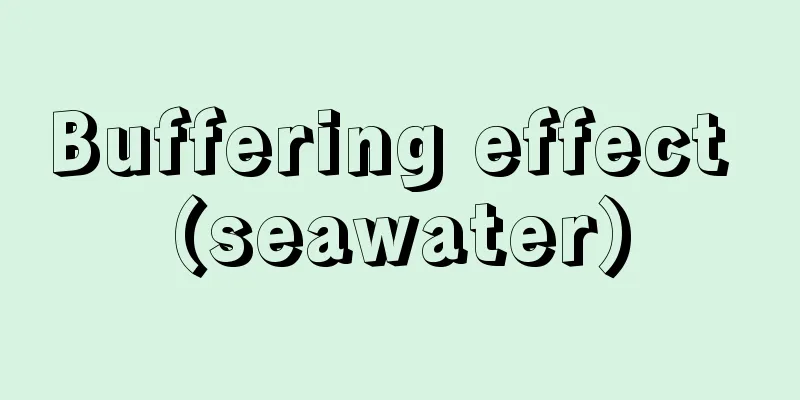
![Yamato [town] - Yamato](/upload/images/67cc1bf453436.webp)
